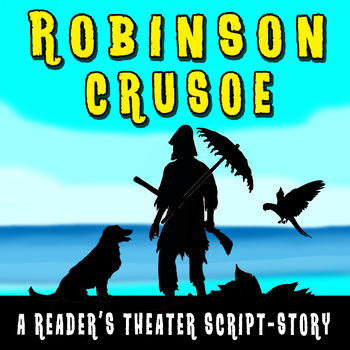Robinson Crusoe: A Reader's Theater Script-Story
- Zip
What educators are saying
Description
The timeless story of one man's survival, Daniel Defoe's Robinson Crusoe is now available as a Reader's Theater script-story. Join Robinson Crusoe as he washes ashore on a lonesome island, salvages debris from his wrecked ship, does battle with his own despair, and attempts to build himself a home in new surroundings. In a physical, yet mental, battle, Crusoe uses faith and ingenuity to survive in a strange environment. Sometimes hailed as the first English language novel, this story is the archetypal Character vs. Nature story.
Note: This Reader's Theater script-story re-tells only the first portion of the novel.
This download includes:
- 12-page Reader's Theater script-story adaptation of Robinson Crusoe
- 2-page Teacher Guide with relevant background information, story summary, essential questions, connections to Cast Away (2000), anticipatory questions, teachable terms, recall questions, and analysis questions
Robinson Crusoe is a staple of classic literature and addresses the following themes:
- Character vs. Nature
- Survival
- Human ingenuity
For other adaptions of classic works, check out the following:
- Dante's Inferno
- The Canterbury Tales
- Don Quixote
- Paradise Lost
- The Iliad
- The Odyssey
- Beowulf
- Sir Gawain and the Green Knight
- Frankenstein
- Dracula: COMING SOON!
This resource would pair well with Crowded Sea Kingdom (Classroom Game)




